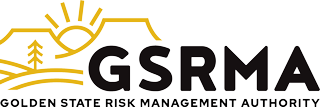Payroll audits and premium “true-ups” are standard in the insurance and risk pool arena – especially when it comes to workers’ compensation insurance. While this is just a small part of a carrier’s or risk pool’s process to charge adequate but competitive premiums to their clients or members, it may be significant to an insured since it usually results in either a refund or additional invoice after the end of the coverage period.
To understand the need for true ups, we must first understand the process insurers use to calculate their insureds’ premiums. This calculation usually starts with a “basic” rate for each type of client or entity. It may be influenced by such things as sub-group loss trends, industry projections and geographic location.
Once rates are calculated, the insurer needs to multiply that rate times some quantity. This quantity is called exposure. Exposure is the primary measure of an entity’s likelihood to sustain a loss. While the concept of exposure is consistent across insurance programs, different types of exposure may be used for different types of insurance.
Exposure may include employee classes, vehicle type and use, the insured’s annual budget and more. However, payroll is the most widely used basis for exposure for most lines of insurance.
Payroll, along with employee count and employee class codes, is the primary method of measure of exposure for workers’ compensation coverage. It makes sense, in general, that the greater the payroll an entity has the more likely that they might suffer a loss. These payroll-related items may also be incorporated into the exposure calculation for other types of coverage such as general liability, bond loss and auto liability.
The insurer, then, needs to collect accurate exposure data to calculate annual premium. Prior to a coverage period, the insurance entity asks each insured entity to estimate what their payroll (exposure) will be for the upcoming year. They use that estimate times the rate to calculate the total premium an insured must pay prior to the start of the period.
The challenge with the estimate is that it is just that – an estimate. After the coverage period has ended the actual amount of payroll paid is likely going to be different than the amount that was estimated. So, an insured may be paying too much if they overestimated, or not paying enough if they underestimated, their payroll.
To address this issue, insurance entities conduct a “payroll audit” or lookback process after the coverage period has ended. An insurer will request totals of actual payroll paid for the recently ended period. Some insurance entities even require proof of gross payroll such as copies of quarterly state or federal payroll reporting documents. Some insurance companies may even require additional proof including job descriptions (to establish class codes), etc.
Once the insurer is satisfied that the final number is accurate, they compare that to the estimate that was provided by the insured prior to the beginning of the period. They then calculate any shortage or excess collected based on the difference between actual and estimated. Finally, the insured will then be credited any amount they overpaid or invoiced for what they underpaid.
Interestingly, the overall effect of true ups on the financial health of an insuring entity is usually minimal. The over- and under- estimates often offset each other. Any significant delta can be considered in rates in a future period.
For example, the 2021-22 lookback for our risk pool, Golden State Risk Management Authority, resulted in a 0.6% change in payroll.
However, for some of our individual members, the result was more significant. The most significant decrease was 63%. The most significant additional amount was 104% – more than doubling a member’s premium for the prior year!
The use of payroll as the primary measurement of exposure makes it important for both insurers and, especially, insureds to provide as accurate estimates as possible. Both our underwriting department and our members’ finance or HR/payroll departments put considerable effort into this process.
But even with that, the unexpected can occur as the coverage year progresses. Increased funding that allows additional positions, budgeted but unfilled positions, etc. can have a significant impact on payroll exposure.
If your entity is subject to unexpected swings in payroll, you may want to compare your actual payroll (and the calculated premium resulting from that payroll) with your estimated on a regular basis so that the extent of a true up won’t be a complete surprise.
Should you have further questions about the true-up process or wish to discuss your entities true-up, please reach out to your Account Manager or contact our Member Services department.

